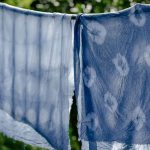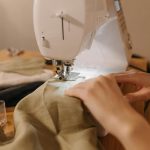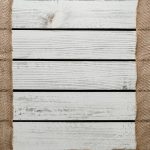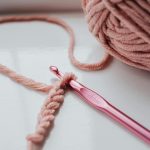When you think about eco-friendly fashion, you might overlook fabrics like cambric, but it deserves your attention. This lightweight, breathable material not only offers comfort but also supports sustainable practices through its biodegradable nature. By choosing cambric made from organic cotton or linen, you can contribute to healthier ecosystems while enjoying vibrant designs created with low-impact dyes. As the fashion industry shifts towards sustainability, it's essential to explore how cambric stacks up against other materials and what that means for the future of your wardrobe. What else could you discover about this intriguing fabric?
Table of Contents
History of Cambric
Cambric, a lightweight and finely woven fabric, has roots tracing back to the 16th century in the town of Cambrai, France. As you delve into its history, you'll discover that this fabric was originally made from linen, prized for its smooth texture and durability. It quickly gained popularity, especially in Europe, where it became a favorite among the upper classes for its luxurious feel.
By the 17th century, cambric's production expanded, and it began to incorporate cotton, making it more accessible. You'd notice that it was often used for delicate garments, handkerchiefs, and children's clothing, highlighting its versatility. The fabric's lightweight nature made it ideal for layering, which suited the fashion trends of the time.
As you explore the evolution of cambric, you'll see that it played a significant role in the development of textile manufacturing techniques. Factories emerged in England and the Netherlands, allowing for mass production. This shift not only made cambric widely available but also set the stage for its resurgence in contemporary fashion.
Today, you can appreciate its historical significance while considering its place in eco-friendly fashion movements.
Environmental Benefits
Eco-friendly fashion offers numerous environmental benefits, including reduced waste and lower carbon emissions throughout the production process.
By choosing materials like cambric, you're directly contributing to a more sustainable industry. Cambric, made from natural fibers, is biodegradable, meaning it won't linger in landfills for centuries like synthetic fabrics. This property helps minimize the overall waste generated by the fashion industry.
Additionally, the production of cambric typically requires less water and energy compared to conventional fabrics. When you opt for cambric, you support practices that conserve vital resources. Plus, many cambric manufacturers prioritize eco-friendly processes, reducing harmful chemicals and pollutants released into the environment.
You'll also find that cambric's durability extends the life of your garments, leading to less frequent replacements. This longevity translates to less waste and a smaller carbon footprint over time.
By integrating cambric into your wardrobe, you not only enjoy a stylish and versatile fabric but also play a part in combating climate change.
In essence, choosing cambric is a step towards promoting a cleaner, greener planet, allowing you to make a positive impact through your fashion choices.
Cambric Vs. Other Fabrics
When comparing cambric to other fabrics, you'll find significant advantages that highlight its sustainability and practicality in fashion. Cambric, made from cotton, provides a lightweight and breathable option, ideal for various climates. Unlike synthetic fabrics, it's biodegradable and minimizes environmental impact, aligning perfectly with eco-conscious values.
Here's a quick comparison of cambric and other commonly used fabrics:
| Fabric | Sustainability | Comfort Level |
|---|---|---|
| Cambric | Biodegradable, low impact | High |
| Polyester | Non-biodegradable | Moderate |
| Linen | Biodegradable | High |
| Rayon | Semi-synthetic | Moderate |
In this table, you can see that while linen also offers sustainability, cambric stands out due to its comfort. Polyester and rayon, though popular, contribute to environmental degradation. By opting for cambric, you're not just choosing a fabric; you're making a statement about your commitment to eco-friendly fashion. Embracing cambric means embracing both style and sustainability, making it a smart choice for your wardrobe.
Uses in Sustainable Fashion
In sustainable fashion, cambric shines as a versatile fabric that's perfect for creating stylish, environmentally conscious clothing. You'll find it used in various garments, from breathable shirts to elegant dresses, making it a favorite among eco-conscious designers. Its lightweight and durable nature means it holds up well over time, reducing the need for frequent replacements.
Cambric's natural fibers are often sourced from organic cotton or linen, ensuring that the production process is less harmful to the environment. When you choose cambric, you're opting for a material that requires fewer pesticides and fertilizers, promoting healthier ecosystems.
This fabric is also easy to dye and print on, which means you can enjoy vibrant colors and unique patterns without compromising on sustainability. Many brands are now producing cambric pieces with low-impact dyes, further minimizing their environmental footprint.
Additionally, cambric's breathability and moisture-wicking properties make it ideal for everyday wear, ensuring comfort while you stay stylish. With its blend of functionality and eco-friendliness, cambric is a fantastic choice for anyone looking to make a positive impact through their fashion choices. You can embrace sustainable fashion without sacrificing style!
Care and Maintenance Tips
To keep your cambric garments looking their best, it's essential to follow proper care and maintenance practices that extend their lifespan and maintain their eco-friendly qualities.
Start by washing your cambric in cold water with a gentle detergent. This helps preserve its fibers and minimizes energy use. Avoid bleach, as it can damage the fabric and harm the environment.
When drying, air dry your garments whenever possible. If you must use a dryer, opt for a low heat setting. High heat can lead to shrinkage and wear. Iron your cambric on a low setting while it's still slightly damp to smooth out any wrinkles without damaging the fabric.
Store your cambric items in a cool, dry place. Avoid hanging heavy garments, as this can cause stretching. Instead, fold them neatly to maintain their shape.
If you notice any stains, treat them immediately with a gentle stain remover before washing.
Frequently Asked Questions
Is Cambric Suitable for All Skin Types?
Cambric's lightweight and breathable nature makes it suitable for most skin types. However, if you have sensitive skin, you should test it first. It's always best to ensure comfort before making a decision.
Where Can I Buy Eco-Friendly Cambric Fabrics?
You can buy eco-friendly cambric fabrics at specialty fabric stores, online retailers like Etsy or Amazon, and local markets focusing on sustainable products. Always check for certifications to ensure the materials meet eco-friendly standards.
How Does Cambric Compare in Price to Other Sustainable Fabrics?
When you compare cambric to other sustainable fabrics, you'll find it's often more affordable. It balances quality and cost effectively, making it a great choice for those wanting eco-friendly options without breaking the bank.
Can Cambric Be Dyed Without Harming the Environment?
Yes, you can dye cambric using natural dyes, which minimizes environmental impact. Avoid synthetic dyes as they often contain harmful chemicals. Opt for eco-friendly options to keep your dyeing process sustainable and safe for the planet.
What Certifications Should I Look for in Sustainable Cambric Products?
When you're shopping for sustainable cambric products, look for certifications like Global Organic Textile Standard (GOTS), OEKO-TEX, or Fair Trade. These ensure the materials are eco-friendly, ethically sourced, and produced without harmful chemicals.
- How Does Ring Spun Cotton Affect Garment Fit and Shape Retention? - August 13, 2024
- What Are the Challenges in Producing Ring Spun Cotton? - August 13, 2024
- Is Ring Spun Cotton Suitable for Plus-Size Clothing? - August 13, 2024







